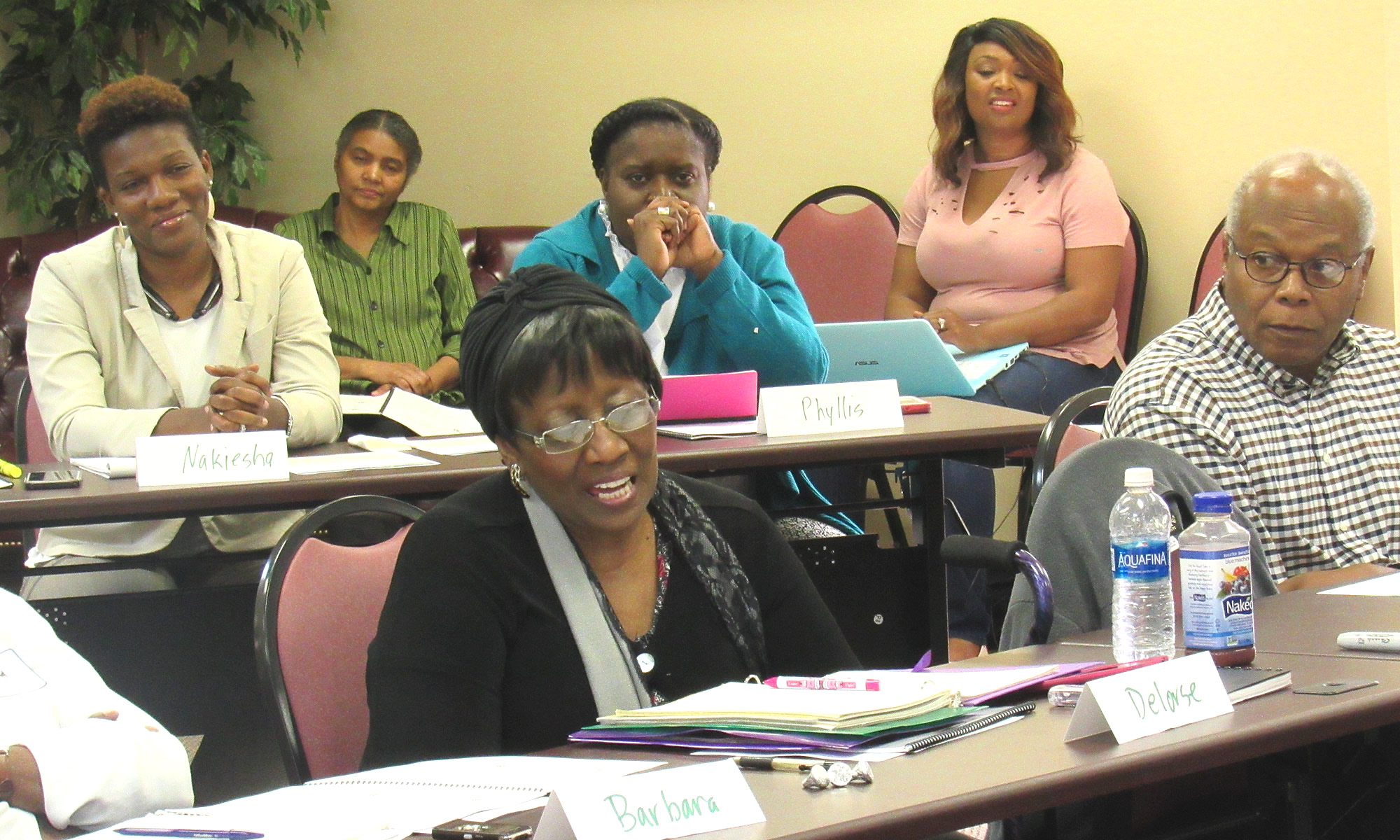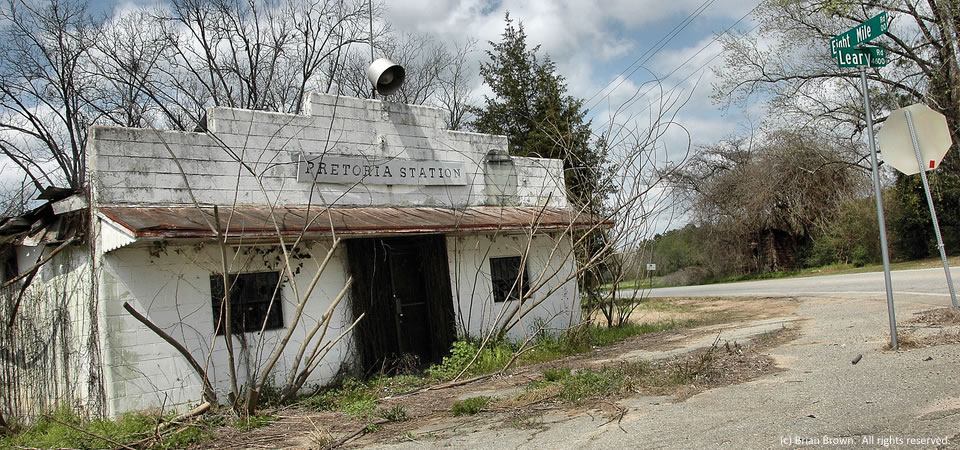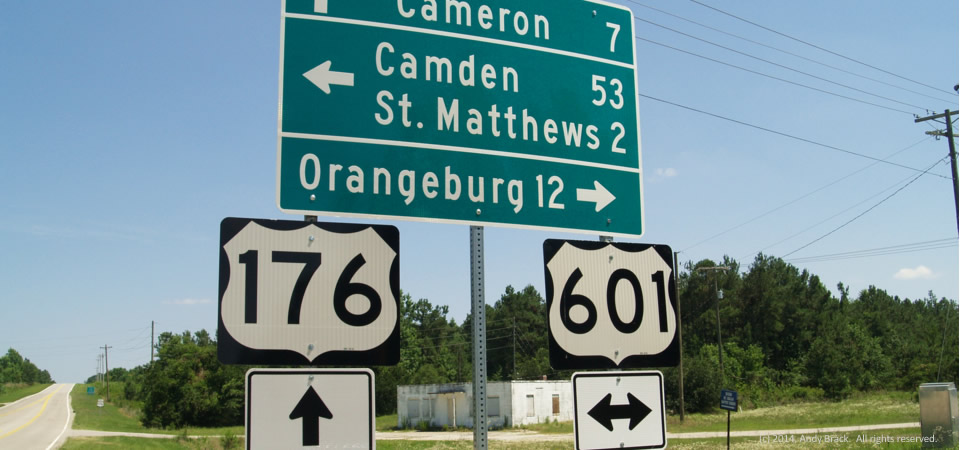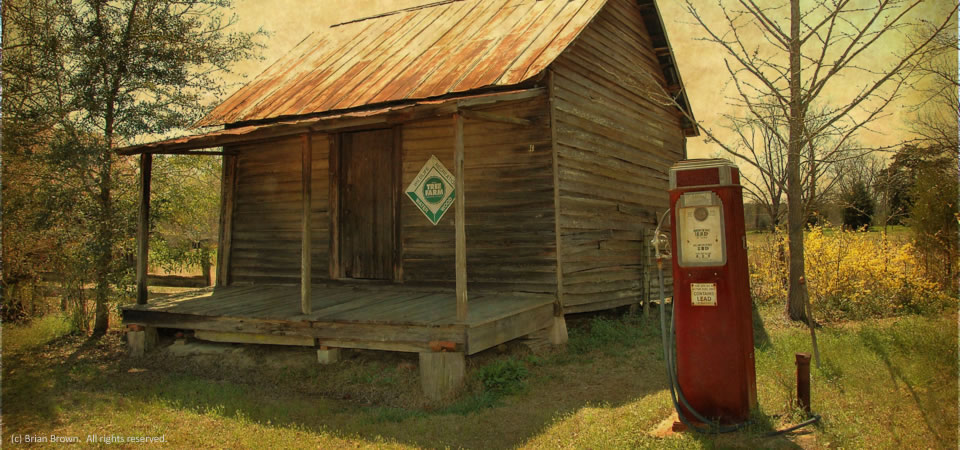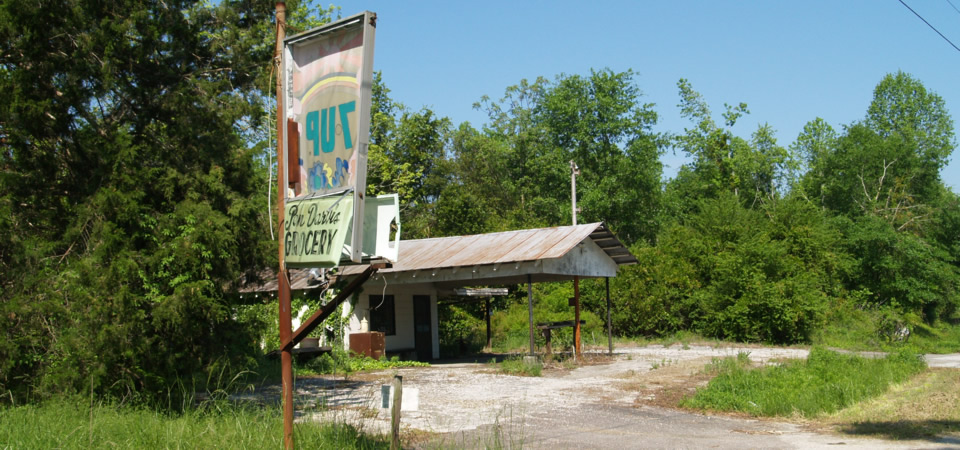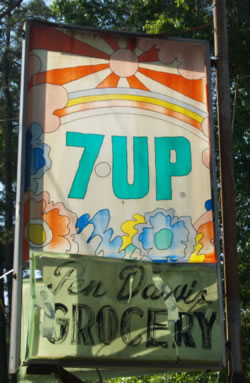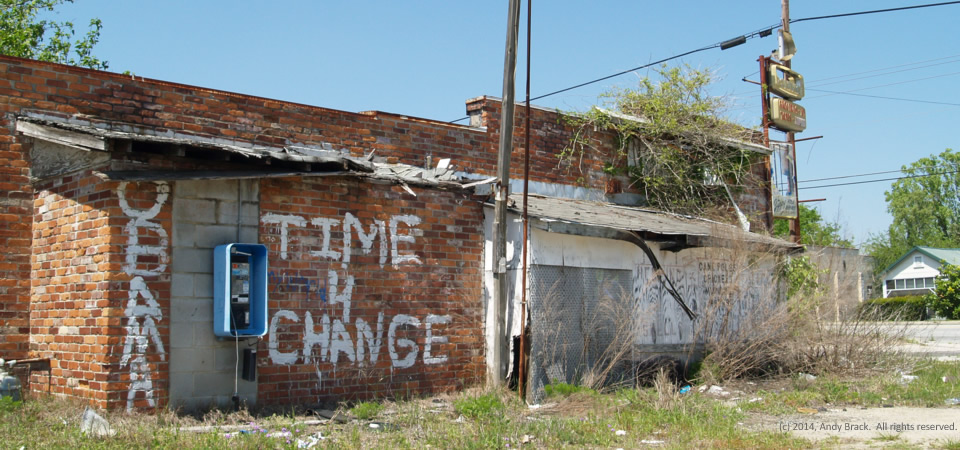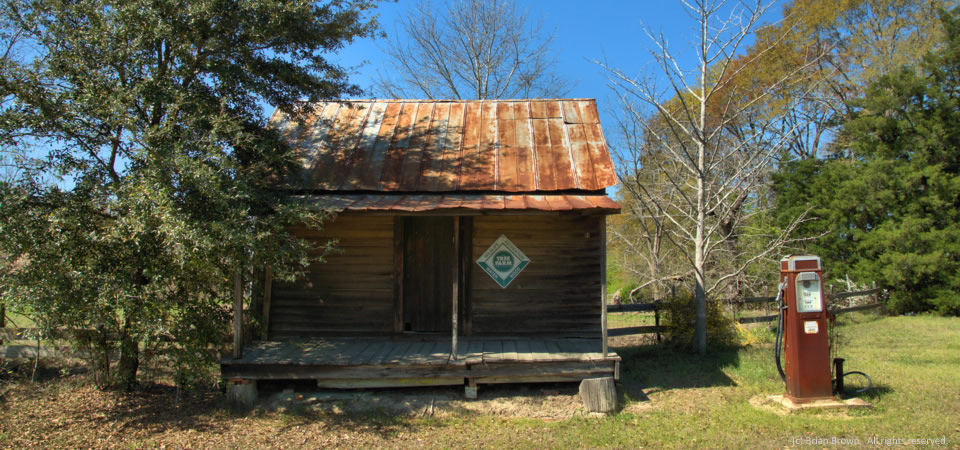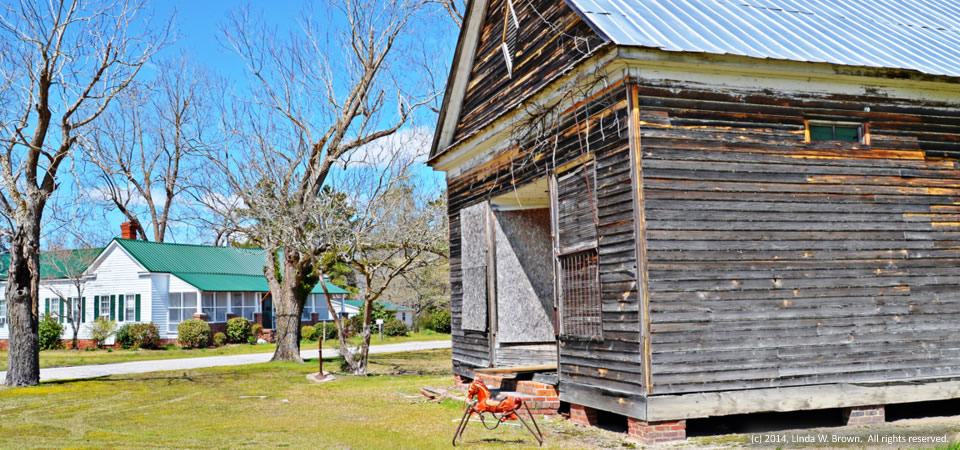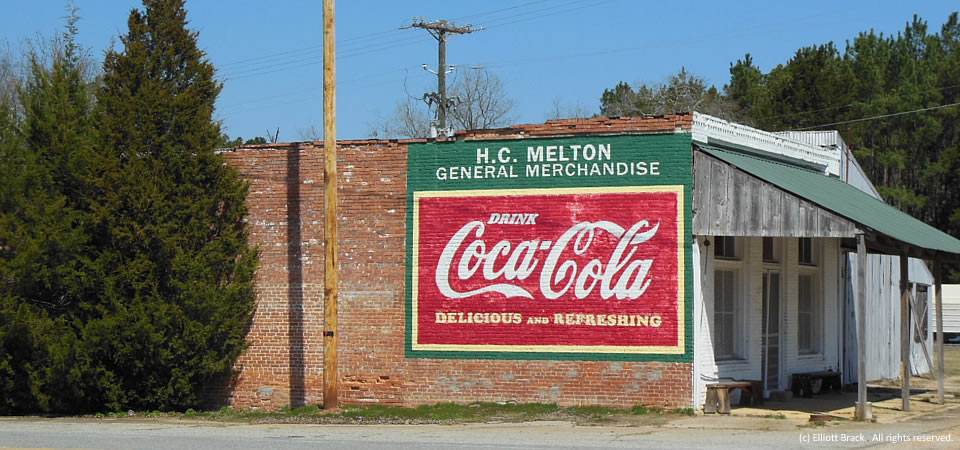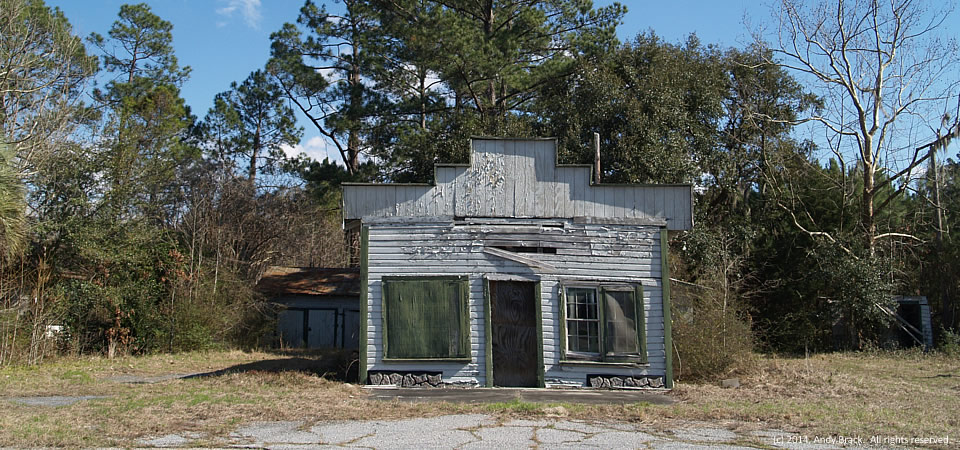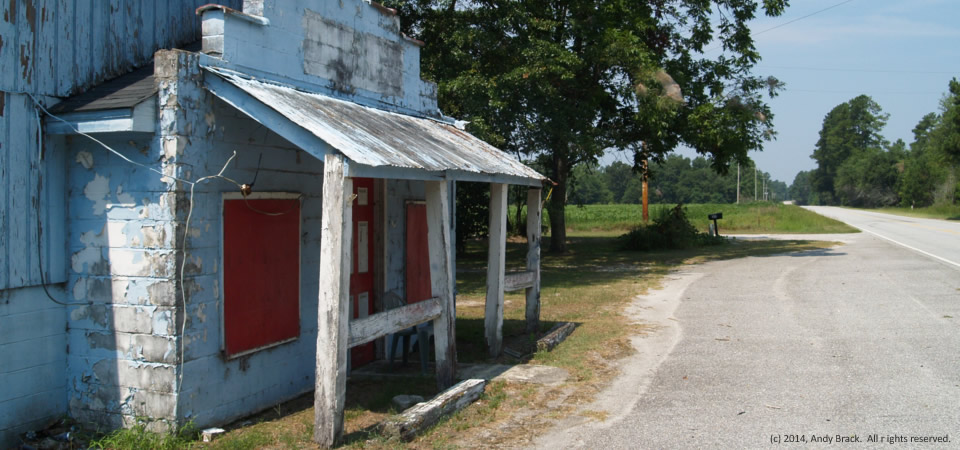
We’re not exactly sure what this old place is, but figure it probably most recently was a rural joint, preceded by being a country store of some sort. Likely as not, there have been some very good times had here. The run-down building, located along S.C. Highway 261 between Manning and Kingstree, S.C., is in agricultural Clarendon County.
Clarendon County has 34,357 people, according to the U.S. Census Bureau’s 2012 population estimate. About half of the county’s residence are white; the other half are black. Some other statistics:
- High school graduation rate of those 25 or older: 76.3 percent.
- Bachelor’s degree graduates: 13.8 percent
- Median household income: $33,267
- Poverty rate: 22.8 percent
Photo taken July 9, 2014, by Andy Brack. Copyrighted; all rights reserved.
